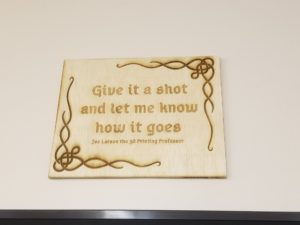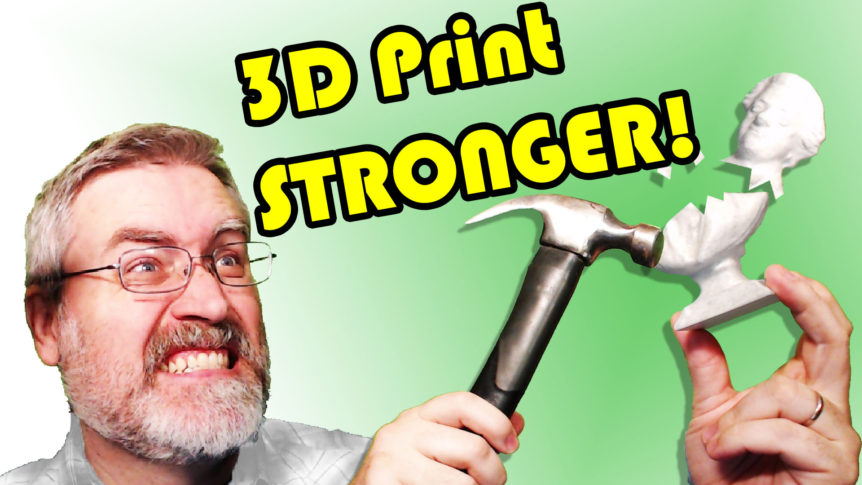Others have done more scientific testing with other materials. In fact CNC kitchen did many excellent videos about printing stronger, and I love his video series. However, he skipped on the printing TPU solid options, and I think that’s a testament to how under utilized this material is.
Of course this all depends on what your definition of strong is, and I still don’t want to say TPU is the strongest in every circumstance ever. But it is pretty rugged.
 One thing I didn’t talk about in the video was supports. With TPU bonding so tightly, you’d think supports would be impossible to remove, and you’d be right… unless you get your settings right. This is an area I need to experiment with some more, but I have seen TPU prints with supports that came off beautifully and left an almost scar free bottom surface. It was one of those times in the makerspace where someone wanted to try it and instead of saying “Well, I know best” I said “Give it a shot and let me know how it goes”, and I learned something. This was on the Raise3D N2+, and I think they must have some voodoo in their support settings for TPU.
One thing I didn’t talk about in the video was supports. With TPU bonding so tightly, you’d think supports would be impossible to remove, and you’d be right… unless you get your settings right. This is an area I need to experiment with some more, but I have seen TPU prints with supports that came off beautifully and left an almost scar free bottom surface. It was one of those times in the makerspace where someone wanted to try it and instead of saying “Well, I know best” I said “Give it a shot and let me know how it goes”, and I learned something. This was on the Raise3D N2+, and I think they must have some voodoo in their support settings for TPU.
I finally featured Cymon in a video. I decided he’ll just be back there running the attract screen on some classic games. In this video he was showing F-Zero on the NES for the long shots and Stellar Assault on the 32x for the closeups. In retrospect I should have done F-Zero on the N64 so there was a cohesive connection between the two, but this is my first time, so I hope you’ll forgive me. And I do use Cymon to play games on, but mostly he’s a wifi bridge, bringing wifi to my shed. Yes, I now have Wifi in my shed, thanks to Cymon. Pretty exciting.

